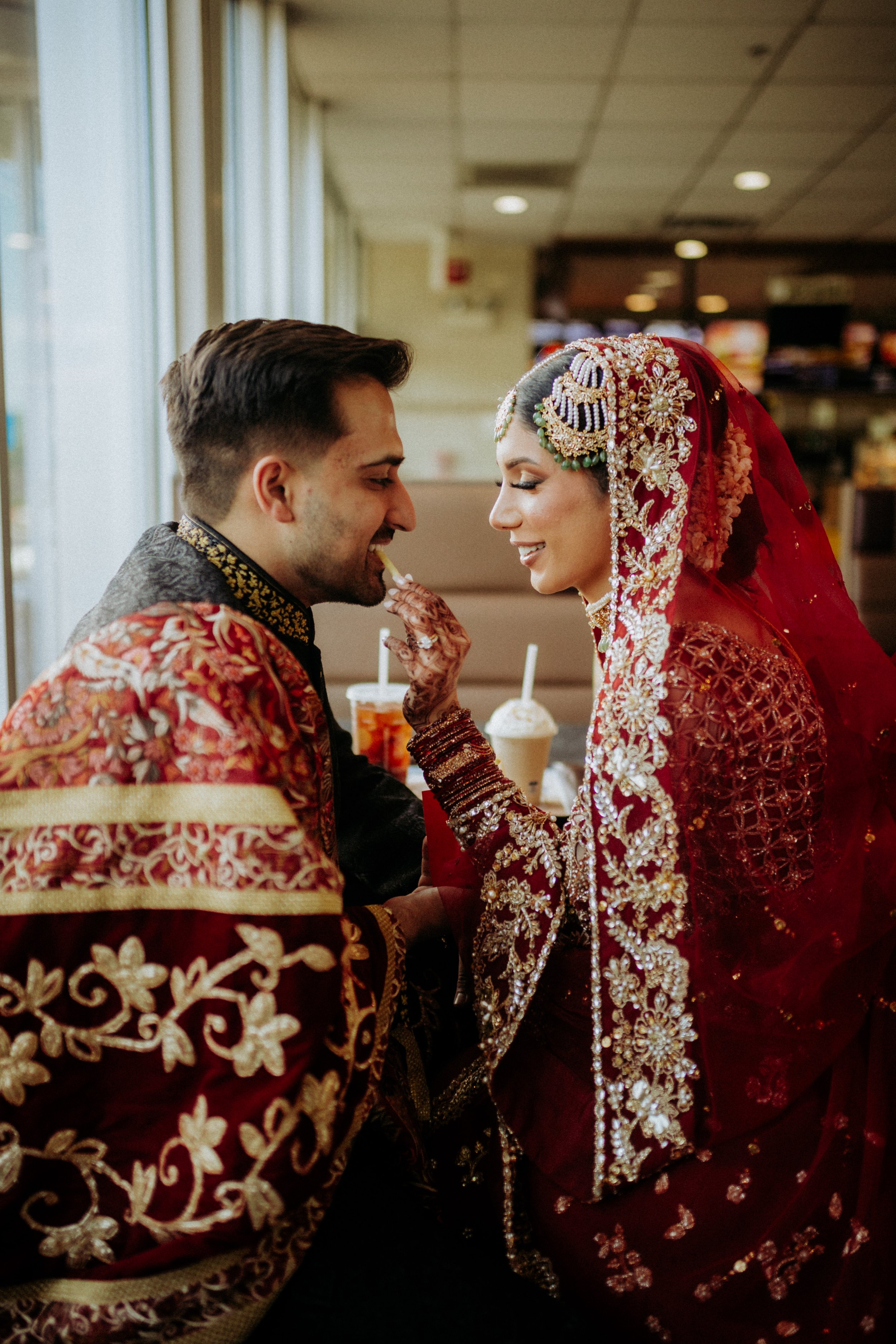From Nikah to Walima: A Photographic Tale of Muslim Matrimony
The journey of Muslim matrimony is a story of profound cultural significance and deep-rooted religious values, stretching from the intimate, sacred moments of the Nikah to the joyous, communal celebrations of the Walima. As a photographer, to capture the essence of this journey is to embark on a narrative-rich expedition. This blog post will explore the unique beauty and challenges of photographing a Muslim wedding, from the solemnity of the Nikah to the exuberance of the Walima.
1. Nikah: Capturing the Sacred Union
The Nikah ceremony is the heart of a Muslim wedding. It’s a solemn and spiritual event where the marriage contract is signed. Photographing the Nikah requires a deep understanding of its religious and cultural nuances. The challenge lies in capturing the gravity and serenity of the occasion. It’s about focusing on the subtle, yet significant, gestures: the exchange of vows, the quiet concentration on the faces of the bride and groom, and the solemn moments of prayer. These images serve not just as memories but as a testament to the couple's commitment to each other and their faith.
2. Mehndi: The Palette of Emotions
The Mehndi ceremony, usually held before the wedding day, is an event filled with color and laughter. As a photographer, the Mehndi presents an opportunity to capture the vivaciousness of the festivities. The key is to focus on the intricate designs of the henna as it's applied to the hands and feet of the bride and the joyous interactions among guests. These moments are full of warmth and excitement, setting the tone for the celebrations to come.
3. Rukhsati: The Emotional Farewell
Rukhsati, the moment when the bride leaves her parental home, is one of the most emotional parts of a Muslim wedding. It’s a bittersweet farewell, full of tears and tender embraces. Capturing these moments requires sensitivity and empathy. The challenge is to be respectful of the family's emotions while documenting these poignant moments. The photographs from Rukhsati are often the most emotive, capturing a pivotal moment in the lives of the bride and her family.
4. Walima: The Festive Celebration
The Walima is the grand finale of the wedding festivities, characterized by its festive atmosphere and lavish celebrations. Here, the challenge for photographers is to capture the scale and excitement of the event. From the elaborate decorations and sumptuous feasts to the lively dances and laughter, the Walima is a photographer's playground. This is the time to capture candid shots of the guests, the elegance of the couple, and the overall joy and splendor of the occasion.
5. Overcoming Technical Challenges
Muslim weddings pose unique challenges for photographers, particularly in terms of lighting and composition. The varied venues and times of day require a versatile approach to lighting and equipment. Understanding how to work with different lighting conditions, from the soft, natural light of day ceremonies to the dynamic, artificial light of evening celebrations, is crucial. Additionally, composing shots that capture the grandeur of the settings while focusing on the intimate moments between the couple and their families requires a keen eye and creative vision.
6. The Art of Storytelling Through Photography
Ultimately, photographing a Muslim wedding is about telling a story. Each image is a narrative piece, contributing to the larger story of the couple's journey from Nikah to Walima. The goal is to create a visual narrative that not only documents but also celebrates the union of two families, the richness of their traditions, and the joy of their celebrations. This storytelling approach provides the couple with not just a collection of photos but a timeless and cherished narrative of their special day.
Capturing a Muslim wedding from Nikah to Walima is an enriching experience for any photographer. It’s an opportunity to immerse oneself in the beauty of Islamic traditions, to witness the depth of emotional connections, and to tell a story filled with love, faith, and joy. Each photograph taken is more than just a memory; it’s a piece of a story that will be told for generations to come, a story of love, family, and the unifying power of matrimony.




